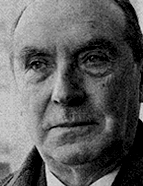

As an editor, Lapa cultivated a demanding, relentless spirit when revising the work of others, aware nonetheless that a solution might never be found for some issues (on the edition of cantigas de amigo by J.J. Nunes. he writes: “Although at times the reading of the apographs is straightforward and self-evident, it is sometimes a problem, the solution to which is and will forever be pending” [Lições…,1981, 141]).
Thus, he also acknowledged the validity of suggestions made by fellow historians such as S. Pellegrini, G. Tavani, L. Stegagno Picchio, V. Bertolucci, S. Panunzio, J. L. Pensado, J. M. Piel, W. Mettmann for improvement of his 1965 edition. This notion of belonging to a tradition of studies dates back to as early as 1930 in the analysis he makes of the cantiga attributed to D. Denis “Pero muito amo, muito non desejo” [“But much I love, much I desire not”] when he states that he is making endeavours to publish the “fourth edition of the elaborate cantiga” in the wake of similar works by Michaëlis, Lang and Nobiling (Miscelânea…, 1982, 205).
A synthesis, forcibly of an economic nature, of Rodrigues Lapa’s contribution to the delimitation of Portuguese medieval culture must surely highlight how his multilingualism mirrored a decentralised view of Portuguese literature in the Middle Ages. Particularly regarding Galician-Portuguese lyric, the boundaries defined by Lapa allow for linguistic permeability, since the language on which it is based is cultivated by authors of diverse nationalities and languages. Averse to interpretations grounded on identity self-sufficiency issues, he therefore tried to determine the result of historical, social, and linguistic tension movements.
In this regard, Lapa stands out as an exceptional cultivator of Romance philology, creating an unstable balance between the in-depth knowledge of the surviving documents and the use of a powerful critical imagination. He was probably the last comprehensive medievalist in whose work a balance was established between original research and sustained dissemination.
Indeed, besides his academic activity (as professor and author) it is worth noting that following his dismissal from Faculdade de Letras in 1935, Lapa took up publicism, namely as a journalist and editor of literary collections. Between 1935 and 1937, he directed the cultural weekly publication O Diabo, where he replaced Ferreira De Castro, and coordinated the collection of Sá da Costa classics and the Seara Nova collection Textos Literários [Literary Texts], in both cases contributing with some volumes he had organised himself.
